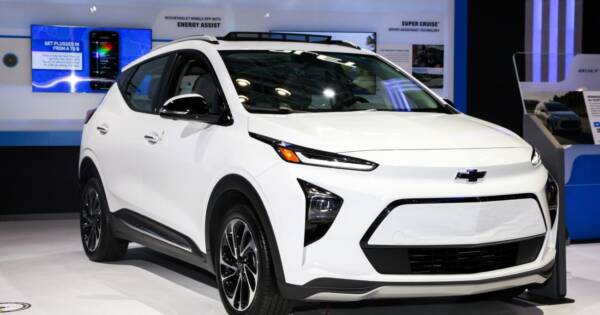A brand-new car is one of the most expensive purchases you’re ever likely to make. Though it obviously varies, the average price of a new car is now estimated to exceed $34,000.1 Beyond the purchase price, new car owners have to consider interest payments on loans, maintenance costs, insurance, and a whole host of other expenses.
Because of the ever-increasing cost of buying new, more and more people are looking for good alternatives to buying a new car. Here are five options you should consider to help you circumvent the need to buy a new car.

1. Buy a Used Car
The most obvious alternative to buying a new car is to buy a lightly used one instead. By the end of its first year on the road, the average car can lose up to $9,000 of its initial value to depreciation.2 In other words, buying a car that is only one or two years old could save you thousands of dollars. In terms of ease of use, buying a used car is exactly the same as buying a new one, as you will own the car in either case.
The upsides of buying a used car are the significant savings you can realize by doing so and the greater selection of cars you will have to choose from when you decide to buy. The downside, though, is the fact that you will likely have to put more maintenance work into a used car than a new one. Buying a used car will also give you access to a less appealing range of financing options, as loans for used vehicles tend to come with higher interest rates than manufacturer incentive offers on new ones.
2. Lease Your Next Car
Another good alternative to buying a new car is to lease one. Leasing will allow you to keep and drive a car for a period of up to several years without actually owning it. The superiority of this arrangement over owning comes from the fact that you won’t have to resell the car later. Instead, you’ll simply return it to the dealership that leased it to you, saving you the hassle of arranging a sale or trade-in.3
In terms of costs, leasing involves its own upfront expenses that include a first month’s payment, a down payment, and a series of fees associated with the lease. Where leasing becomes financially advantageous, however, is in the subsequent monthly payments. Your lease payments will likely be considerably lower than loan payments would be on the same car, since you will eventually have to return the vehicle rather than take full ownership of it. Leases are quite good in terms of ease of use as they allow you to keep the car and drive it for long periods of time.
The advantages of leasing are the lower monthly payments, as well as the fact that most lease agreements involve the manufacturer or leasing dealer taking care of all maintenance work unless the car receives abnormal wear and tear. On the downside, though, you will have to return the car eventually. Under the terms of most leases, there will also be a monthly or yearly mileage limit, making leases impractical for people who travel extensively by car.
3. Car Subscriptions
Although they are still relatively new, vehicle subscription services offer an interesting and useful alternative model to buying a new car. Car subscription services allow you to pay a monthly fee with no down payment or interest charges to drive cars offered by a manufacturer. Because of its lack of interest payments, that fee can be lower than a monthly car payment. Be aware, however, that prices of car subscription services run the gamut from only a few hundred dollars per month to nearly $2,000 for top-tier luxury brands.4
In most cases, these services will let you change out the car you’re driving on a regular basis, making them more flexible than traditional leasing options. Because their fees are flat, car subscription services can be a better option than buying new for people who aren’t comfortable haggling over prices. These services can be a little difficult to use when you’re trading one car in for another, but most of them offer reasonably good service.
Car subscription models offer substantial advantages in terms of flexibility. Their disadvantages, however, are the hassle that can come with trading cars out and the high costs of some services charge. It’s also worth noting that vehicle subscription services are new enough that they aren’t available everywhere in the United States yet.5
If you enjoy the idea of being able to choose from many different cars depending on what you want to drive at a given time, though, a car subscription service may be just the option you’ve been looking for.
4. Using a Ridesharing Service
Ridesharing services such as Uber and Lyft can be extremely convenient ways to get around buying a car. Ridesharing’s most obvious advantage over buying, leasing, or even subscribing to a car is the fact that the driving will be done for you. Time once spent driving on your daily commute can instead be put to more productive use, all while another person deals with the hassles of traffic. If you live in an urban area and have a short commute to and from work, ridesharing can even be less expensive than owning your own car once fuel, insurance, and other expenses are factored in.6
Ease of use is a major problem with the ridesharing model. While buying, leasing, or subscribing to a vehicle allows you to simply get in, turn the key and drive off, a ridesharing driver will take some time to reach you after you request a ride.
Sheer convenience is obviously the major advantage of ridesharing, while the lead time for drivers to reach your location is the major disadvantage. Adding to the advantage column, however, is the fact that ridesharing will allow you to completely avoid the maintenance-related costs you would normally incur as a car you purchased new aged.7
5. Car Sharing
Car sharing is a model that falls somewhere in between ridesharing and traditional rental arrangements. Car sharing services maintain reserved parking spots at various locations throughout cities and leave vehicles that users can rent on a short-term basis in those spots. To rent one of these cars, you can simply log into your car sharing app, reserve it, and go to pick it up. With this model, you can rent a car at any time, day or night, and pick it up in a convenient location. As a result, this model is fairly user-friendly, though it still does require some effort on your part.8
The advantages of this model include convenience and a lack of maintenance fees. If you live close to work and don’t have to drive often, a car sharing arrangement is a great way to get a car when you really need one without having to maintain, insure, and store it the rest of the time. As with other models that don’t involve direct ownership or long-term proprietorship of the car, though, reserving and picking up the car can be an inconvenience, especially if you aren’t already within easy walking distance of the pickup location.9
These are just a few of the practical alternatives that currently exist to buying a brand-new car. If you have been considering buying a new car, one of these options may help you save money and avoid the many inconveniences that come with caring for a new car. Be sure to do your own research and crunch the numbers, though, as any one of these models can become overly expensive if it is not approached in the right way.


